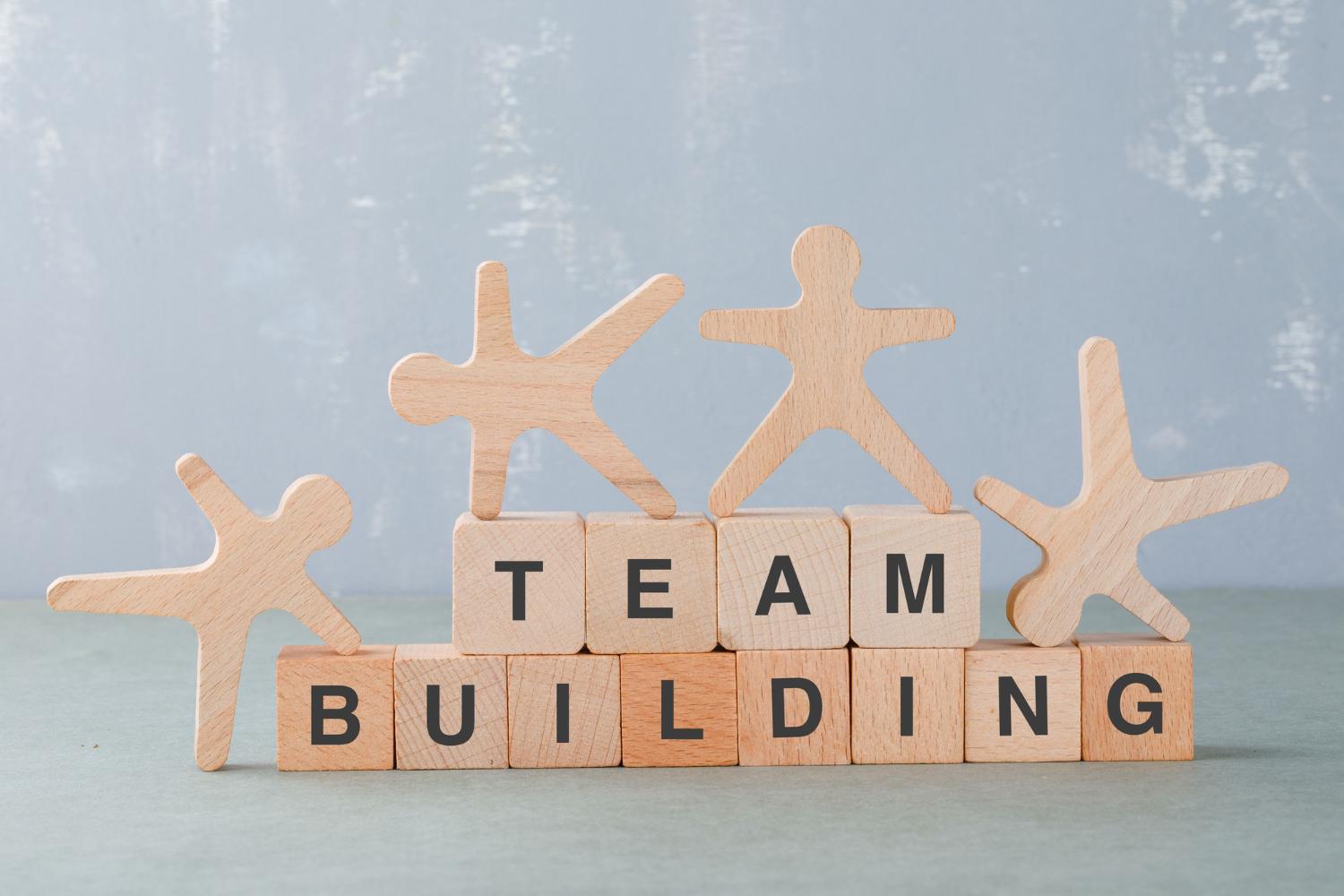Introduction: Effective team building plays a vital role in creating a cohesive and high-performing workforce. When teams work well together, productivity and employee satisfaction soar. In this comprehensive guide, we will explore the strategies and techniques for building strong and cohesive teams. From fostering effective communication to promoting trust and collaboration, we will delve into each section to provide practical insights and actionable tips. Join us as we uncover the keys to successful team building and lay the foundation for a thriving work environment.
Table of Contents:
- Introduction to Team Building
- Defining Team Goals and Roles a. Establishing Clear Objectives b. Defining Roles and Responsibilities c. Encouraging Goal Alignment
- Fostering Effective Communication a. Open and Transparent Communication b. Active Listening and Feedback c. Embracing Digital Collaboration Tools
- Cultivating Trust and Psychological Safety a. Building Trust through Transparency b. Encouraging Vulnerability and Risk-Taking c. Resolving Conflicts Constructively
- Promoting Collaboration and Cooperation a. Encouraging Cross-Functional Collaboration b. Emphasizing Shared Goals and Rewards c. Providing Opportunities for Team Building Activities
- Nurturing Diversity and Inclusion a. Valuing and Respecting Differences b. Creating an Inclusive Work Environment c. Leveraging Diverse Perspectives for Innovation
- Empowering and Developing Team Members a. Providing Autonomy and Decision-Making Authority b. Offering Continuous Learning and Development Opportunities c. Recognizing and Rewarding Team Achievements
- Monitoring and Evaluating Team Performance a. Establishing Key Performance Indicators (KPIs) b. Conducting Regular Performance Reviews c. Adjusting Strategies Based on Feedback and Insights
- Leading by Example a. Demonstrating Positive Leadership Behaviors b. Setting Clear Expectations and Providing Guidance c. Celebrating Team Successes
- Sustaining a Culture of Teamwork a. Integrating Team Building into Organizational Culture b. Encouraging Continuous Improvement and Adaptability c. Recognizing and Addressing Team Dynamics Challenges
- Conclusion
- Introduction to Team Building: Team building involves creating an environment where individuals come together to achieve common goals. In this section, we highlight the importance of team building in enhancing productivity, employee satisfaction, and organizational success. We discuss the benefits of effective team collaboration and lay the foundation for the subsequent sections.
- Defining Team Goals and Roles: To build a cohesive team, it is crucial to establish clear objectives and define individual roles and responsibilities. This section explores strategies for setting clear team objectives, aligning them with organizational goals, and defining the roles and responsibilities of team members.
a. Establishing Clear Objectives: Clear objectives provide a sense of direction and purpose to the team. We discuss the importance of setting specific, measurable, achievable, relevant, and time-bound (SMART) goals. We emphasize the need to align team objectives with the organization’s overall vision and mission.
b. Defining Roles and Responsibilities: Clearly defined roles and responsibilities minimize confusion and promote accountability within the team. We discuss the importance of assigning tasks based on individual strengths and expertise. Effective delegation techniques and methods for fostering a collaborative work environment are provided.
c. Encouraging Goal Alignment: Goal alignment ensures that everyone in the team is working towards a common purpose. We explore strategies for fostering goal alignment, such as regular check-ins, progress updates, and creating a shared vision. We also discuss the benefits of encouraging team members to align their personal goals with team objectives.
- Fostering Effective Communication: Open and effective communication is crucial for team cohesion. This section explores strategies for fostering open and transparent communication, promoting active listening and feedback, and leveraging digital collaboration tools.
a. Open and Transparent Communication: Open communication encourages team members to express their thoughts, ideas, and concerns freely. We discuss the importance of creating an environment where individuals feel safe to share their opinions and perspectives. Strategies for promoting transparency, such as regular team meetings, open-door policies, and honest and constructive communication, are provided.
b. Active Listening and Feedback: Active listening is the foundation of effective communication. We explore techniques for active listening, such as maintaining eye contact, paraphrasing, and asking clarifying questions. We also discuss the importance of providing timely and constructive feedback to team members, both individually and as a group.
c. Embracing Digital Collaboration Tools: In today’s digital age, leveraging technology is essential for effective team communication and collaboration. We discuss the benefits of using digital collaboration tools, such as project management software, instant messaging platforms, and video conferencing tools. Strategies for incorporating these tools into team workflows are provided.
- Cultivating Trust and Psychological Safety: Trust and psychological safety are vital for building strong and cohesive teams. This section explores strategies for building trust through transparency, encouraging vulnerability and risk-taking, and resolving conflicts constructively.
a. Building Trust through Transparency: Trust is fostered when team members feel that they can rely on each other. We discuss the importance of transparency in building trust within the team. Strategies for creating a culture of trust, such as sharing information openly, involving team members in decision-making processes, and being consistent in actions and communication, are explored.
b. Encouraging Vulnerability and Risk-Taking: A team that encourages vulnerability and risk-taking fosters innovation and growth. We discuss the benefits of creating an environment where team members feel safe to express their ideas, take calculated risks, and learn from failures. Strategies for encouraging vulnerability, such as leading by example, celebrating mistakes as learning opportunities, and providing support and encouragement, are discussed.
c. Resolving Conflicts Constructively: Conflicts are inevitable within any team. We provide guidance on resolving conflicts constructively, emphasizing the importance of active listening, empathy, and seeking win-win solutions. Conflict resolution techniques, such as mediation and negotiation, are explored. Strategies for creating a positive and respectful conflict resolution process are provided.
- Promoting Collaboration and Cooperation: Collaboration and cooperation are fundamental to effective team building. This section explores strategies for encouraging cross-functional collaboration, emphasizing shared goals and rewards, and providing opportunities for team building activities.
a. Encouraging Cross-Functional Collaboration: Cross-functional collaboration harnesses the collective expertise of team members from different departments or disciplines. We discuss the benefits of cross-functional collaboration, such as diverse perspectives and innovative solutions. Strategies for promoting collaboration, such as creating shared spaces, facilitating knowledge sharing, and cross-departmental projects, are explored.
b. Emphasizing Shared Goals and Rewards: Shared goals and rewards foster a sense of unity and purpose within the team. We discuss the importance of aligning individual goals with team objectives and recognizing and rewarding collective achievements. Strategies for aligning rewards and recognition with team successes, such as team-based incentives and public acknowledgments, are provided.
c. Providing Opportunities for Team Building Activities: Team building activities are valuable for fostering camaraderie, trust, and effective communication within the team. We discuss the benefits of team building activities, such as ice-breakers, team outings, and problem-solving exercises. Strategies for incorporating team building activities into regular work routines and creating a positive team culture are explored.
- Nurturing Diversity and Inclusion: Diversity and inclusion are essential for creating a strong and innovative team. This section explores strategies for valuing and respecting differences, creating an inclusive work environment, and leveraging diverse perspectives for innovation.
a. Valuing and Respecting Differences: We discuss the importance of valuing and respecting diverse perspectives, backgrounds, and experiences within the team. Strategies for promoting inclusivity, such as diversity training, unconscious bias awareness programs, and fostering a culture of respect, are explored.
b. Creating an Inclusive Work Environment: An inclusive work environment ensures that every team member feels valued and included. We provide guidance on creating an environment where individuals feel safe to express their opinions, share their ideas, and be their authentic selves. Strategies for promoting inclusivity, such as establishing inclusive policies and practices, promoting diversity in leadership roles, and fostering a culture of belonging, are discussed.
c. Leveraging Diverse Perspectives for Innovation: Diverse perspectives lead to innovative problem-solving and decision-making. We explore strategies for encouraging the contribution of diverse perspectives, such as creating diverse project teams, facilitating open discussions, and recognizing the value of different viewpoints. We discuss how diverse teams can bring fresh ideas and approaches to challenges.
- Empowering and Developing Team Members: Empowering and developing team members is crucial for building a strong workforce. This section discusses strategies for providing autonomy, offering continuous learning opportunities, and recognizing and rewarding team achievements.
a. Providing Autonomy and Decision-Making Authority: Empowering team members to make decisions fosters a sense of ownership and accountability. We discuss the benefits of providing autonomy within defined boundaries and guidelines. Strategies for delegating decision-making authority, encouraging independent thinking, and promoting a culture of empowerment are explored.
b. Offering Continuous Learning and Development Opportunities: Continuous learning and development contribute to the growth and engagement of team members. We discuss strategies for providing ongoing training, mentoring, and career development opportunities. The importance of creating a learning culture, providing challenging assignments, and encouraging knowledge sharing is emphasized.
c. Recognizing and Rewarding Team Achievements: Recognizing and rewarding team achievements reinforce a positive team culture and motivate individuals to excel. We discuss the importance of celebrating team successes and providing timely and meaningful recognition. Strategies for recognizing and rewarding team achievements, such as team-based incentives, public acknowledgments, and team events, are explored.
- Monitoring and Evaluating Team Performance: Monitoring and evaluating team performance are essential for continuous improvement. This section explores strategies for establishing key performance indicators (KPIs), conducting regular performance reviews, and adjusting strategies based on feedback and insights.
a. Establishing Key Performance Indicators (KPIs): We discuss the importance of setting clear KPIs that align with team goals and organizational objectives. Strategies for selecting relevant and measurable KPIs, tracking progress, and providing visibility to team members are explored.
b. Conducting Regular Performance Reviews: Regular performance reviews provide opportunities for feedback, growth, and alignment. We discuss best practices for conducting effective performance reviews, including setting clear expectations, providing constructive feedback, and creating development plans. Strategies for creating a supportive and developmental performance review process are discussed.
c. Adjusting Strategies Based on Feedback and Insights: Feedback and insights play a crucial role in improving team performance. We discuss the importance of actively seeking feedback from team members, encouraging open dialogue, and using feedback to drive continuous improvement. Strategies for adjusting team strategies based on feedback and insights are explored.
- Leading by Example: Leadership is vital in team building. This section explores the importance of positive leadership behaviors, setting clear expectations, and celebrating team successes.
a. Demonstrating Positive Leadership Behaviors: Leaders play a critical role in setting the tone for effective team building. We discuss the importance of leadership behaviors such as active listening, open communication, and fostering a supportive work environment. Strategies for building trust and inspiring team members are explored.
b. Setting Clear Expectations and Providing Guidance: Clear expectations help team members understand their roles and responsibilities. We provide guidance on setting clear expectations, providing guidance and support, and promoting accountability within the team. Strategies for effective delegation, goal-setting, and performance management are discussed.
c. Celebrating Team Successes: Celebrating team successes is essential for boosting morale and reinforcing a positive team culture. We discuss strategies for recognizing and celebrating team achievements, such as team outings, public acknowledgments, and rewards. The importance of creating a culture of celebration and appreciation is emphasized.
- Sustaining a Culture of Teamwork: Building a cohesive team requires ongoing effort. This section explores strategies for integrating team building into the organizational culture, encouraging continuous improvement, and addressing team dynamics challenges.
a. Integrating Team Building into Organizational Culture: We discuss the importance of creating an organizational culture that values teamwork and collaboration. Strategies for promoting a team-oriented culture, such as aligning organizational values with team values, fostering collaboration across departments, and encouraging knowledge sharing, are explored.
b. Encouraging Continuous Improvement and Adaptability: Continuous improvement is vital for sustaining a high-performing team. We discuss the importance of embracing a growth mindset, fostering a culture of learning, and encouraging adaptability in the face of change. Strategies for promoting continuous improvement, such as conducting retrospectives, encouraging innovation, and providing resources for learning and development, are discussed.
c. Recognizing and Addressing Team Dynamics Challenges: Team dynamics can present challenges that need to be addressed proactively. We discuss common team dynamics challenges, such as conflicts, communication breakdowns, and lack of alignment. Strategies for recognizing and addressing these challenges, such as facilitating open dialogue, promoting trust-building activities, and providing coaching and support, are explored.
In conclusion, effective team building is crucial for creating a cohesive and high-performing workforce. By implementing the strategies and techniques discussed in this guide, organizations can foster effective communication, cultivate trust, promote collaboration, and empower their team members. Building strong teams leads to increased productivity, enhanced employee satisfaction, and long-term organizational success. Embrace the power of effective team building and unlock the full potential of your teams today.





